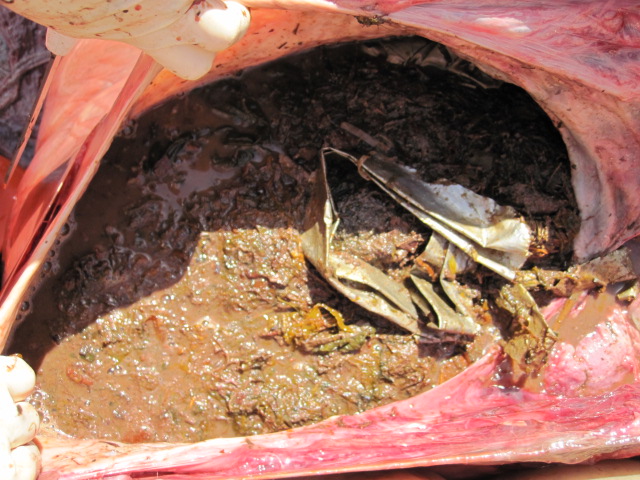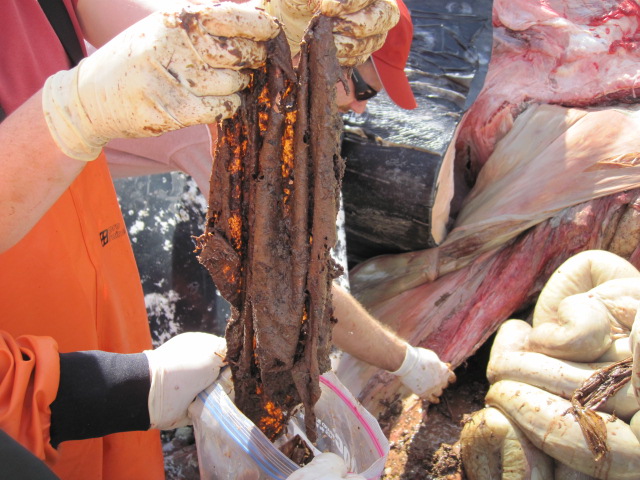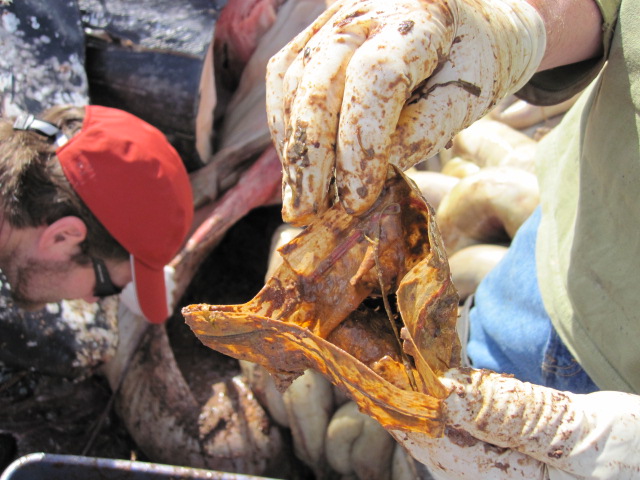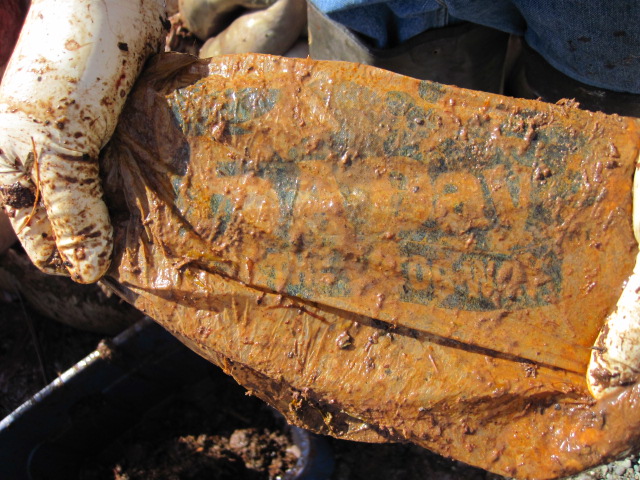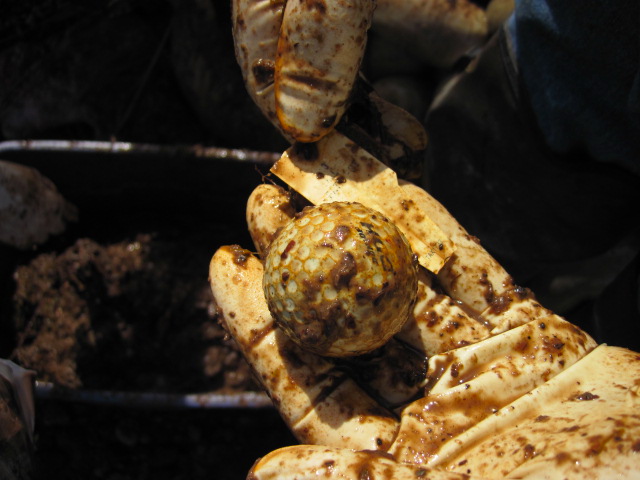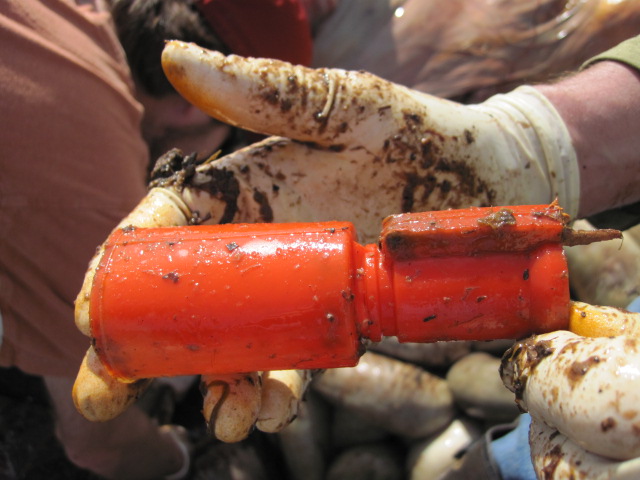Examination of gray whale from west Seattle reveals unusual stomach contents but no definitive cause of death
For more information on this whale contact:
- John Calambokidis or Jessie Huggins, Cascadia Research, Tel 360-943-7325
- Kristin Wilkinson, NOAA Fisheries, Tel. 206-526-4747
A whale that stranded in West Seattle last week (14 April 2010) was towed to a remote location and examined by a team from the Northwest Marine Mammal Stranding Network and results announced 19 April 2010. Logistics and relocation was coordinated by NOAA Fisheries with the help of Highline Community College (the college hopes to preserve the skeleton). The examination was lead by biologists with the Washington Department of Fish and Wildlife and Cascadia Research.
The 37 foot near-adult male was found to be in better nutritional condition than some of the other gray whales that have died in recent weeks and starvation was not considered a major contributor to the cause of death. The animal had more than 50 gallons of largely undigested stomach contents consisting mostly of algae but also a surprising amount of human debris including more than 20 plastic bags, small towels, surgical gloves, sweat pants, plastic pieces, duct tape, and a golf ball (see full list of items found and photo of all items). The debris while numerous, made up only 1-2% of the stomach contents and there was no clear indication it had caused the death of the animal. It did clearly indicate that the whale had been attempting to feed in industrial waters and therefore exposed to debris and contaminants present on the bottom in these areas. Gray whales are filter feeders that typically feed on the bottom and suck in sediment in shallow waters and filter the contents to strain out the small organisms that live there. They have been known to accumulate material including rocks and other debris from the bottom ingested in this process. While debris has been found in the stomachs of some previous gray whales found dead in Puget Sound, this appeared to be a larger quantity than had ever been found previously.
The whale also had cuts on the head possibly from a boat propeller but these did not appear fresh or deep enough to have been involved in the death of the animal. The thorough examination resulted in the collection of a large number of samples for additional analysis including examination for pathology, microbiology, biotoxins, and contaminants. These results will not be known for weeks or months but may provide additional insights into the cause of death of this whale.
This is the fifth gray whale to have died this year in Washington and the fourth in Puget Sound in the last 2 weeks. A summary of some of the other previous gray whale deaths is also available at this link.
Examination of dead gray whale from W Seattle on 18 April 2010. Photos by Cascadia Research.
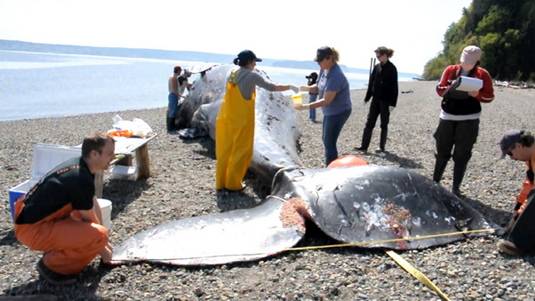
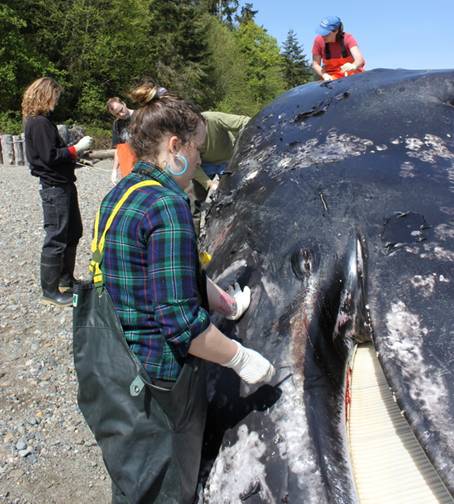
Debris found in stomach of gray whale.
